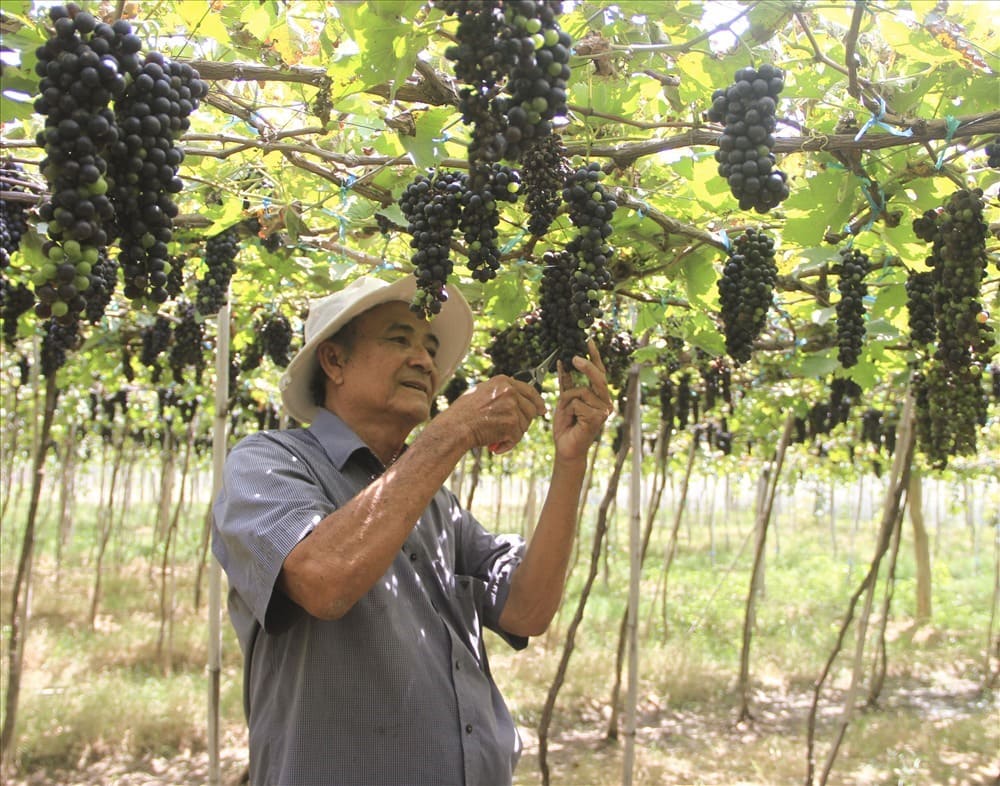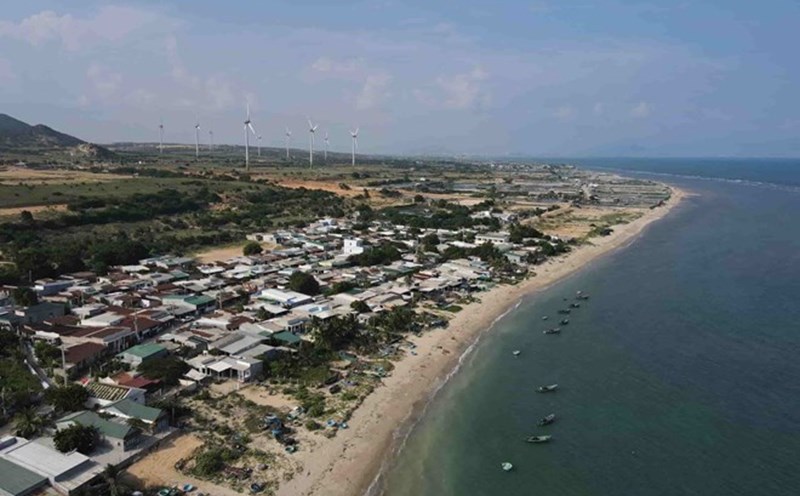Resolution No. 06-NQ/TU dated October 12, 2021 of the Standing Committee of the Ninh Thuan Provincial Party Committee on "Continuing to promote the development of high-tech agriculture in the period of 2021-2025, with a vision to 2030" has been vigorously implemented by the Party Committee to the government, businesses and people.
Thanks to that, a series of bottlenecks in high-tech agricultural production (CNC) have been removed, helping the Ninh Thuan agricultural sector enter a period of sustainable and effective development.
Mr. Dang Kim Cuong - Director of the Department of Agriculture and Environment of Ninh Thuan - said that all 15/15 targets of the Resolution have met and exceeded the set plan.
The scale of CNC production in the whole province reached about 1,355 hectares (exceeding the target of 1,000 hectares); CNC production value reached an average of VND990 million/ha of cultivated land, especially CNC melons and grapes reached more than VND1.2 billion/ha/year.

In addition, Ninh Thuan province has attracted 40 enterprises to invest in CNC agriculture (exceeding the target of 30 enterprises), with 4 enterprises recognized as meeting high-tech criteria. The production value in this field increased by an average of 30.1%/year.
Notably, the agricultural sector has recorded many positive changes. The province has formed 74 production chains according to the large-scale field model, over 15,400 hectares. Of which, 45 growing areas are granted area codes with a total area of over 361 hectares. The province has also converted more than 2,900 hectares of ineffective rice land to specific crops with high economic value, exceeding the target by more than 45%.
These models mainly apply economical irrigation technology, greenhouses,/1 right, 5 down processes... to significantly increase productivity and quality of agricultural products. Average productivity increases 4 times compared to traditional rice production, saving more than 70% of irrigation water.
The value of agricultural production increased by an average of 4.76%/year, reaching 155 million VND/ha, 34 million VND/ha higher than in 2020.
In the livestock sector, the province has gradually reorganized production in the direction of disease control, improving the quality of breeds by artificial insemination and hoac mon methods. To date, the ratio of goats and sheep is maintained at 90%, cows at 51%.
The whole province currently has 105 CNC application farms, in which 6 value chains have been formed, including the goat - sheep chain aiming to export to the Halal market. The production value of the livestock industry in the period of 2021-2025 increased by an average of 8.06%/year.
The aquaculture sector has also been reorganized in the direction of CNC application and priority is given to the development of marine farming. Many new farming models are applied such as: indoor incense snails (92.6ha), 2-phase cardamom farming using HDPE round tanks (8ha), marine fish farming using high-tech cages with a capacity of 2,000m3 and is implementing HDPE cage squid farming on the largest scale in Southeast Asia.
Currently, the whole province has 27 shrimp seedling production enterprises applying CNC. 100% of facilities have achieved production eligibility certification, including 12 facilities that have achieved epidemic safety certification - conditions to reduce supervision, only after-inspection once a year. Seed shrimp output by the end of 2025 is estimated to reach 45 billion posts, exceeding the target set by the Resolution of 4 billion posts.
The value of CNC aquaculture production in the period of 2021 - 2025 increased by an average of 6.14%/year; breed production alone increased by an average of 4.83%/year. The nhan hieu "Ninh Thuan Shrimp Breed" certification helps to enhance reputation, trace the origin and expand the consumption market.
According to the Director of the Department of Agriculture and Environment of Ninh Thuan, in the period of 2025 - 2030, the province will continue to raise people's awareness of CNC agriculture, prioritize investment in completing infrastructure for concentrated production areas, developing raw material areas for processing - export. The goal is to ensure sustainable growth, adapt to climate change, improve production efficiency and actively contribute to the local economy.











